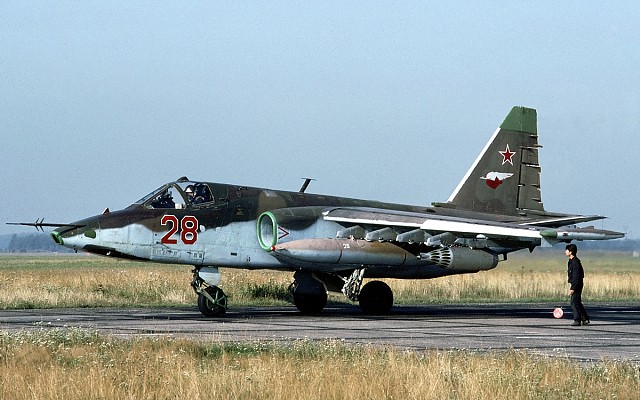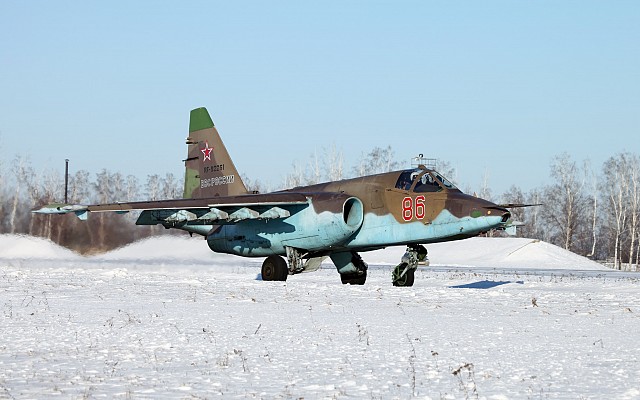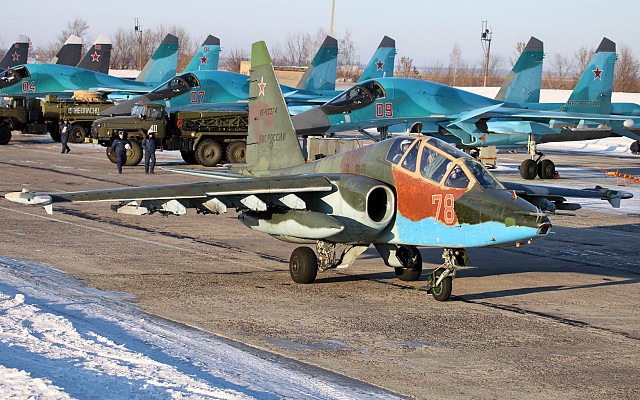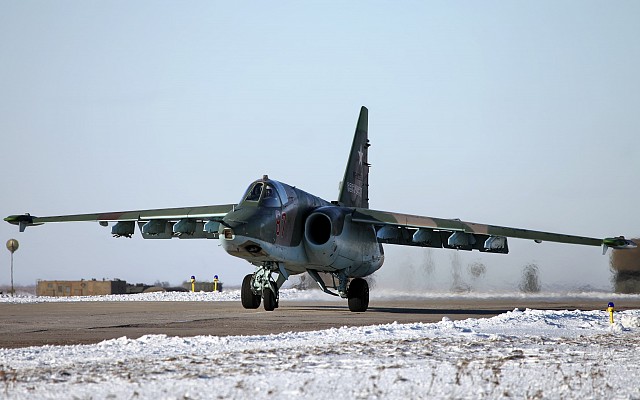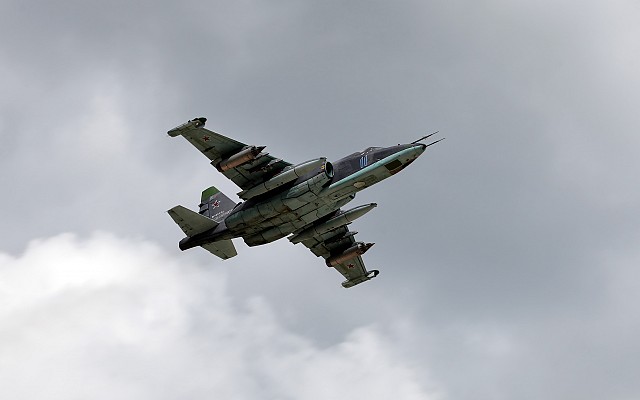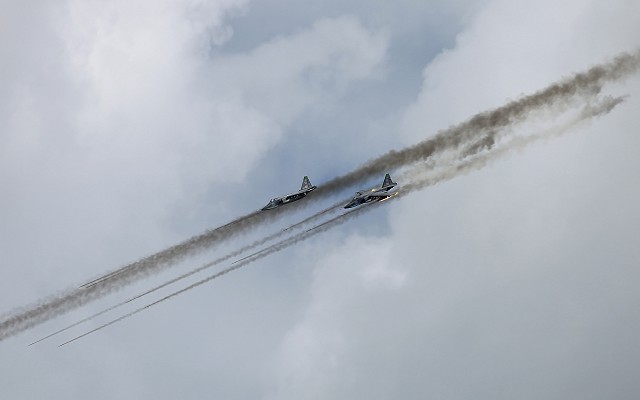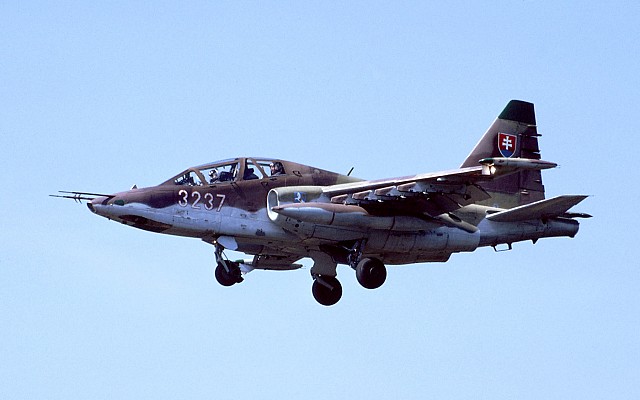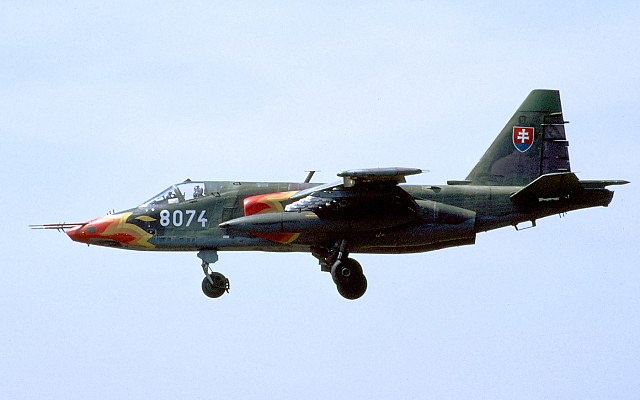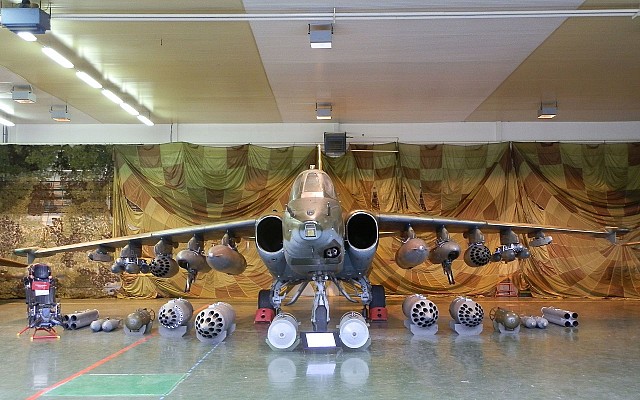Sukhoi Su-25
NATO: Frogfoot
Overview
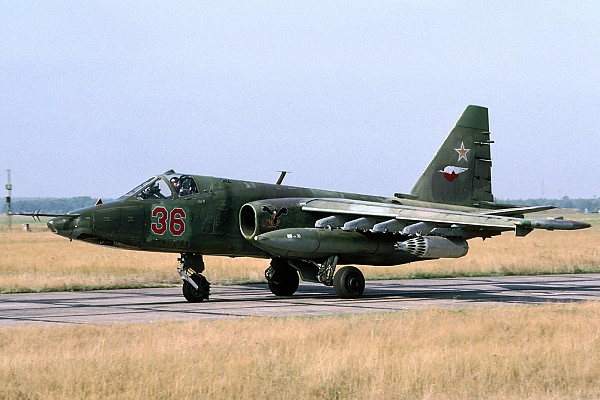
Su-25
Soviet frontal aviation Su-25 stationed in Germany seen in 1992.
Source: Rob Schleiffert -
© CC BY-SA 2.0
1987 for Su-25UB
1980 – 1981 (state tests)
6 August 1985 for Su-25UB
Soviet Union - Ulan-Ude aviation plant
180 Su-25K
>40 Su-25UB/UBK
Grach (Soviet nickname)
Russian for “rook”
T-8 (prototype designation)
Shturmovik (research project)
Description
Introduction
The Su-25 is a late Cold War era ground attack aircraft of Soviet origin. Unusually for Soviet aviation industry most of the early design work was carried out by Sukhoi using their own funding. Only towards the mid 1970’s the government provided funds for prototype production. The Su-25 is an iconic late Cold War and present era ground attack aircraft, having been used in many conflicts since the war in Afghanistan. The Russian nickname for this aircraft is Grach. In the West it is best known by its NATO reporting name Frogfoot.
Design
The Su-25 was an all-new design and was a major departure from the high speed Su-17 and MiG-23BN. Lessons from the Vietnam war and experience from ground attack pilots shifted the focus towards increased protection levels and more stable and slower flight speeds. To allow operation from austere forward airfields the two wings are mounted high and the landing gear is sturdy. The nose wheel is offset to the right for the twin barrel 30mm GSh-30-2 autocannon. The wings have a fixed geometry and the Su-25 has two turbofan engines, while earlier Soviet frontline aviation only had one engine. The Su-25 was easy and stable to fly, resulting in low priority for development of a trainer variant.
Sensors
The Su-25 is fitted with a similar sensor suite as the Su-17M3 (NATO: Fitter-H) ground attack aircraft. This consists of an ASP-17 gunsight for direct and indirect lobbing of freefall bombs and aerial rockets. A laser range finder is mounted in the nose. There is a navigation radar, but it is not suitable for air to air warfare.
Firepower
The Su-25 has 10 hardpoints. The outermost pylons are intended for air to air missiles, such as the infrared guided R-60 (NATO: AA-8 Aphid). The innermost pylons are ‘wet pylons’ and are often used with PTB drop tanks. Total ordnance carried is about 4.000 kg and often consists of unguided rockets, gun pods and dumb bombs. However, a variety of laser and TV guided bombs and rockets can also be carried. Internal armament consists of a 30mm GSh-30-2 double barrel autocannon for which 250 rounds are carried. This double barrel weapon functions according to the Gast principle and has a very high rate of fire.
Mobility
Two non-afterburning turbojets provide power. When introduced the R-95Sh was fitted, with the improved R-195 incorporated in production aircraft since 1987. These provide 4.100 kg and 4.300 kg dry thrust respectively. As such they allow for a high subsonic speed of 950 km/h at sea level with a clean aircraft. With maximum ordnance these engines were found lacking power.
Protection
Compared to earlier Soviet ground attack aircraft protection levels are much increased. A unique feature of the Su-25 is the titanium tub in which the pilot is seated in a K-36 ejection seat. The front windshield is bulletproof. Both are rated against direct hits from 12.7mm rounds. A titanium panel between the engines protects the other engine from shrapnel. ASO-2V chaff and flare dispensers can be fitted.
Users
The Su-25 was adopted by the Soviet frontal aviation and had its baptism of fire in 1980 in Afghanistan, using prototype aircraft at first. The Afghanistan war also introduced improvements, such as a the armored plate separating both engines, allowing Su-25 to limp homing after being struck by a Stinger infrared guided surface to air missile. Export models dubbed Su-25K were delivered to Czechoslovakia, Bulgaria, Iraq and North Korea. After the break-up of the Soviet Union most Soviet Su-25s were spread among Russia, Belarus and Ukraine.
Variants
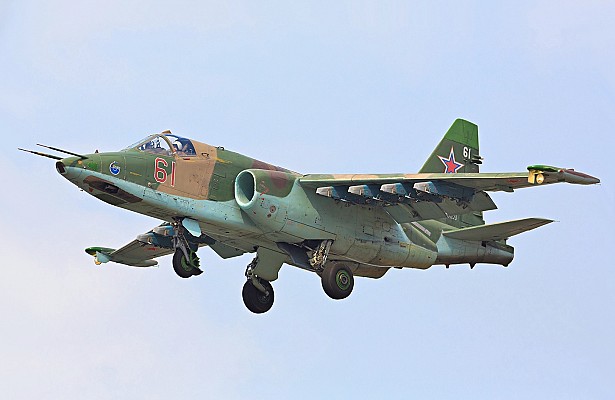
Su-25
Single seat ground attack aircraft, first introduced in 1981. Main production variant for domestic Soviet use. Minor improvements, such as the R-195 engine, introduced over time without change in designation.
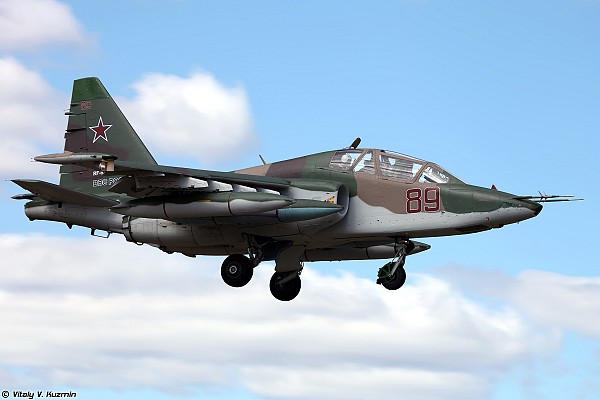
Su-25UB
Two seat trainer aircraft, first introduced in 1987. Slightly lengthened fuselage and raised cockpit to accommodate two seats in tandem setup. The Su-25UB retains the all combat abilities of the Su-25. The aircraft can be controlled from both seats. An extensible periscope provides vision for the instructor in the rear seat upon landing.
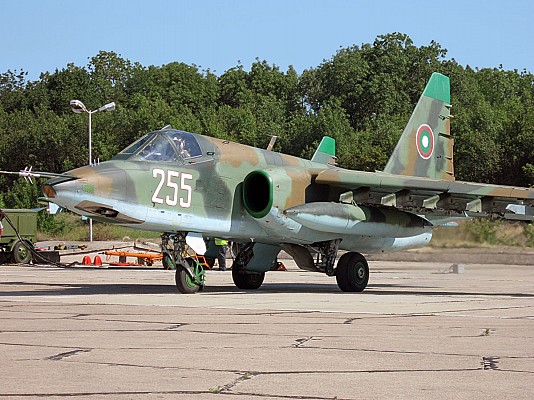
Su-25K
Commercial variant of the Su-25 intended for export sales. The export model of the Su-25UB is known as Su-25UBK. The aircraft delivered to Warsaw Pact states are reportedly practically identical to the Soviet Su-25 and Su-25UB. Those exported to Iraq and North Korea reportedly have downgraded avionics.
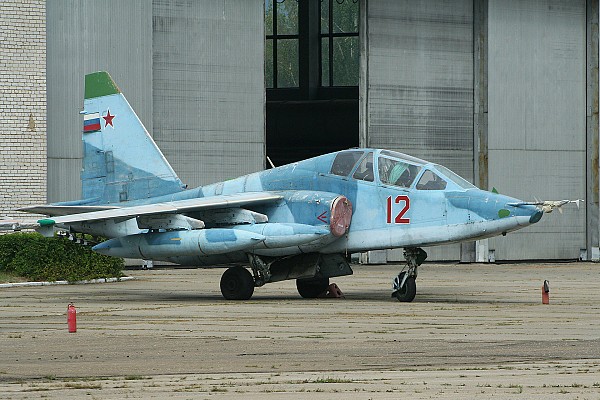
Su-25UTG
Carrier training aircraft for naval aviation. Variant of the Su-25UB fitted with arrestor hook, reinforced landing gear and only four hardpoints. Batch of 10 aircraft produced from 1989 to 1990. Some more produced as Su-25UBP by converting existing Su-25UB.
Details
Media
Weapon options
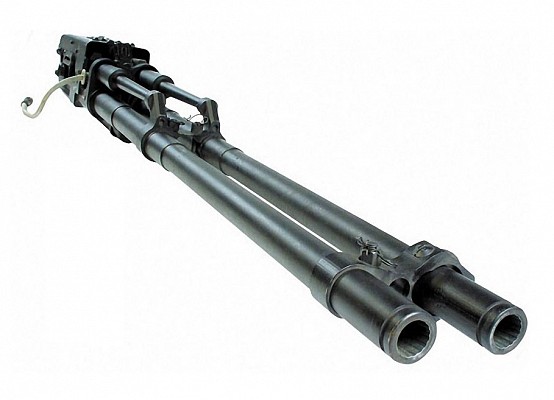
30mm GSh-30-2
The Su-25 is armed with a single twin barrel GSh-30-2 belt-fed autocannon. Most have been fitted with a muzzle device that vents the exhaust gasses downward. There are 250 rounds to fire.
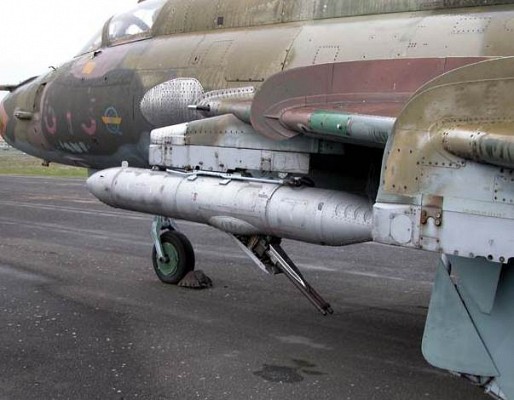
SPPU-22
Gun pod with twin barrel 23mm GSh-23L autocannon. These barrel can be trained downward, reducing the steepness of the dive angle while strafing ground targets.
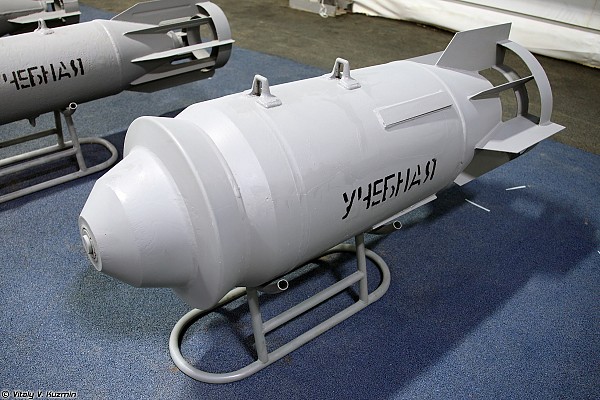
FAB M54
The FAB M54 family of general purpose aviation bombs is often used on the Su-25 since it flies at subsonic speeds.
Although 4x FAB-250 is a standard loadout, up to 8x FAB-500 can be carried.
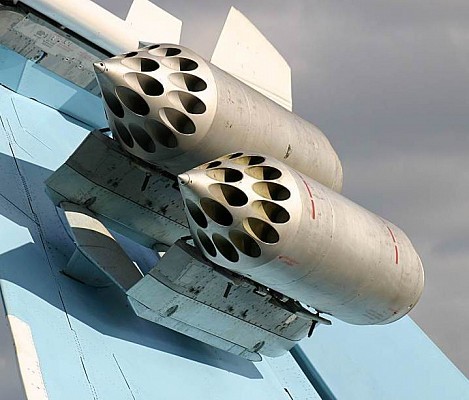
80mm S-8
The S-8 aerial rocket is commonly used on the Su-25. These are fired from the B-8M1 rocket pod which has a more aerodynamic shape compared to the pods intended for helicopter use.
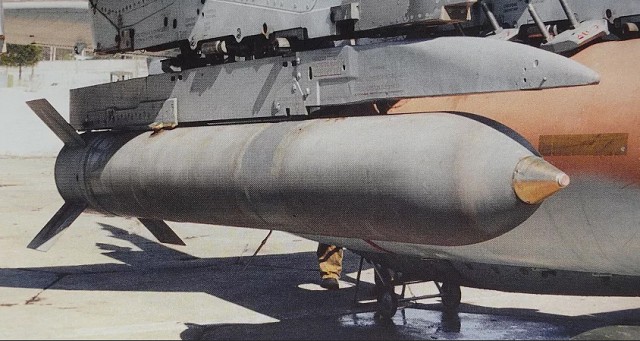
240mm S-24
The S-24 heavy aerial rocket is commonly seen on the Su-25, especially those exported to foreign nations. Up to 8 of these can be carried.
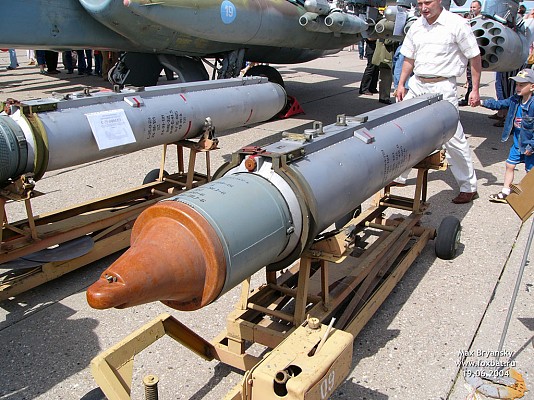
266mm S-25
The S-25 is the heaviest aerial rocket that can be launched from the Su-25. These are carried in the O-25 single launch tubes. Up to 8 can be carried.
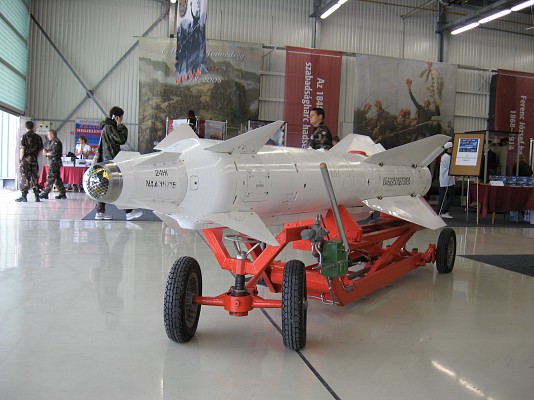
Vympel Kh-29
The Kh-29 (NATO: AS-14 Kedge) is the heaviest air to ground missile that can be carried by the Su-25. The Kh-29L is most commonly used since it can be guided by the nose mounted laser, although not to maximum range. For maximum range or use of the TV-guided Kh-29T an external targeting pod is required.
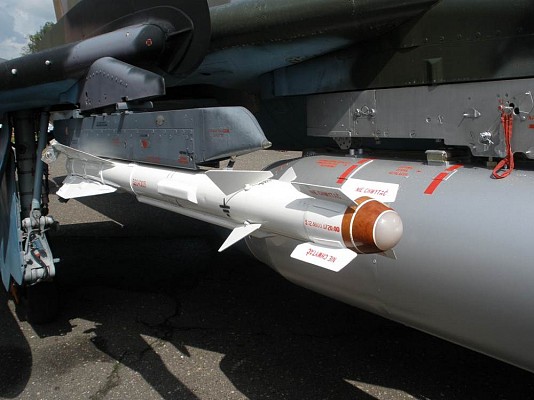
Molniya R-60
Two R-60 (NATO: AA-8 Aphid) infrared guided air to air missiles can be carried on the small outer pylons. These are used for self-defense or for intercepting enemy helicopters.
Related articles
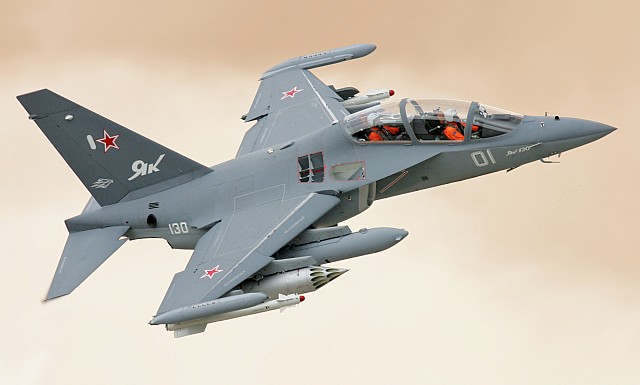
Yakovlev Yak-130
With production of the Su-25 ceased the Yak-130 is proposed as a light ground attack aircraft, although lacking the armor and extensive carry capacity.
